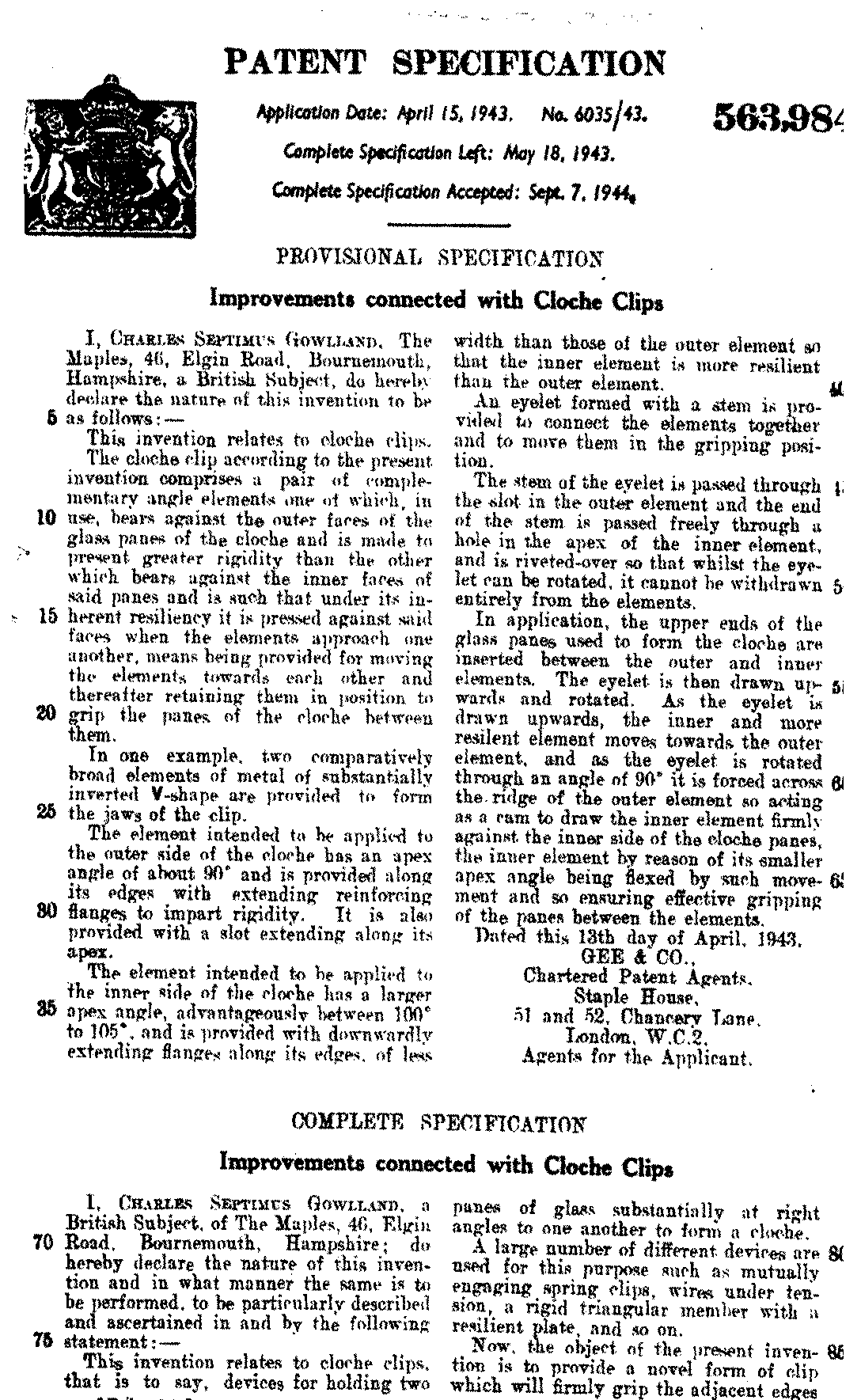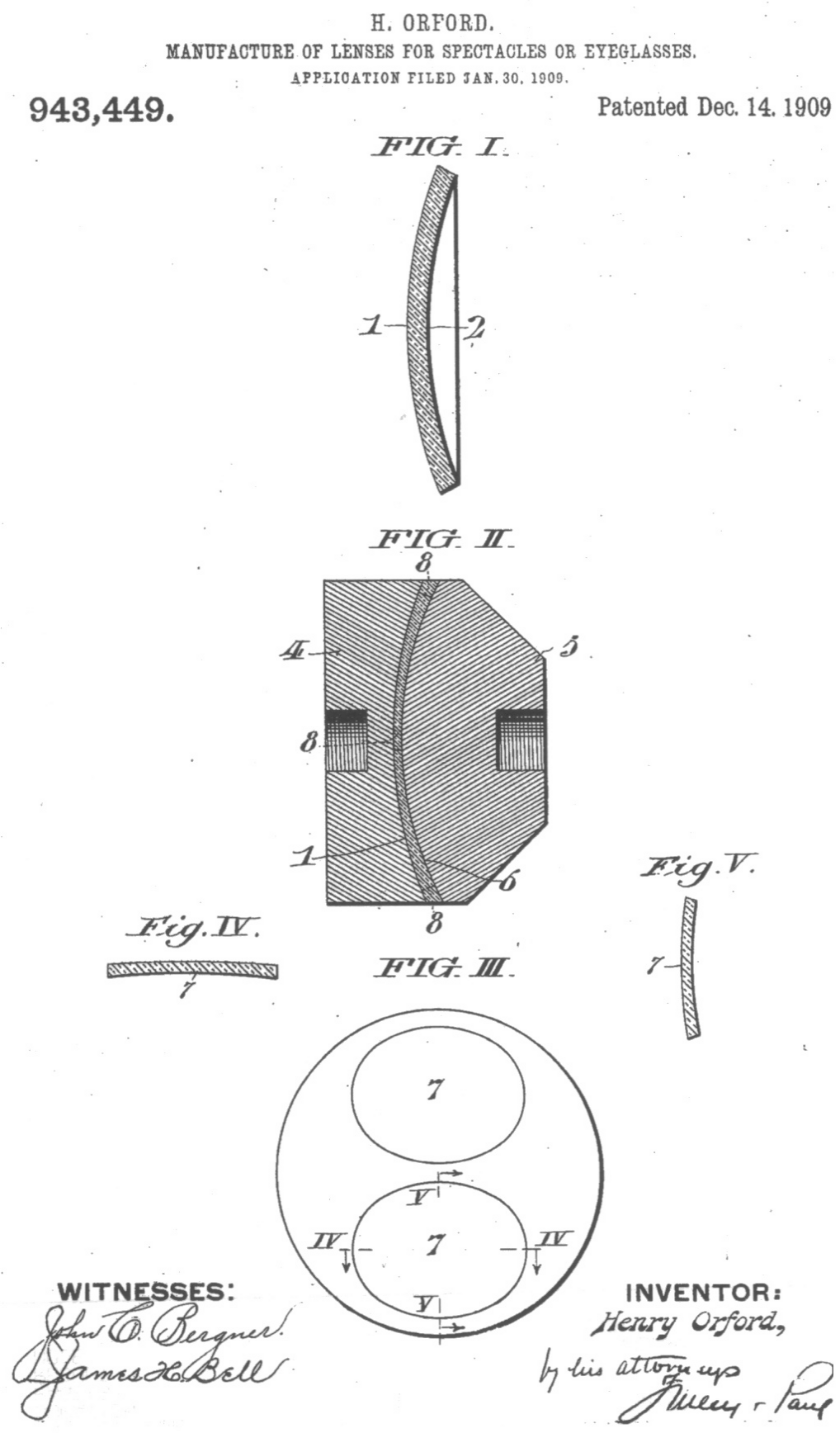
[Note - clicking on the link (in red) brings up the first page. To see subsequent pages, just above the LH corner of the image click on
"1/2 Drawings". Then scroll down to "2/2 Abstract Claims Description" or use the right arrow to access later pages
Henry Orford (NB!) 30 January 1909 Manufacture of Lenses for Spectacles and Eye-Glasses Ref G02C7/02
Taken out in his first names, with no mention of "Gowlland"; and
with one-half assigned to an American Samuel J Taylor, this is his
first description of a lens with one spherical surface and one parabolic.
There is no indication of how he proposes the moulded surfaces be
ground, smoothed and polished - presumably he had not reaches that stage.
Note that throughout he uses, and signs, the name "Henry Orford".

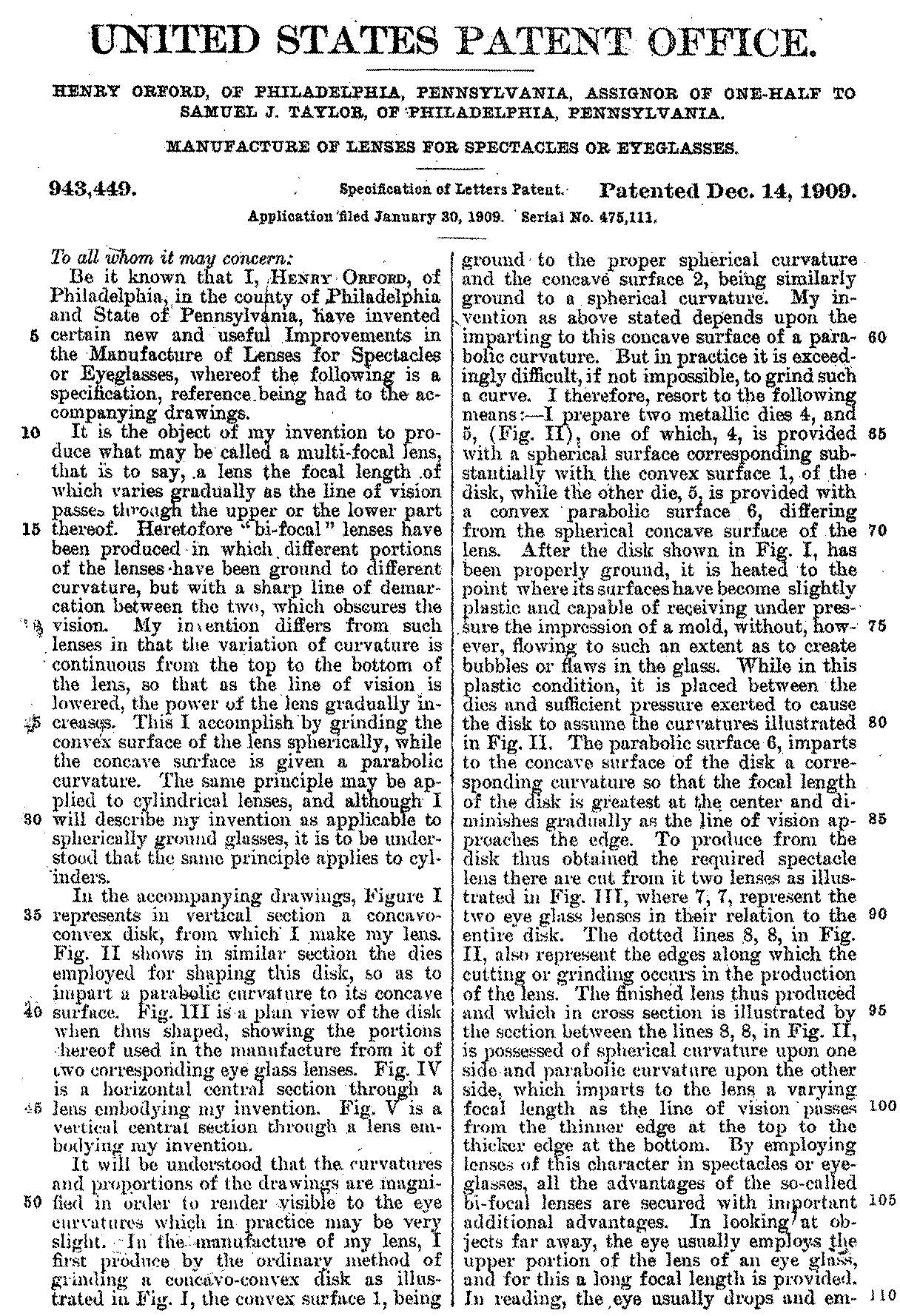
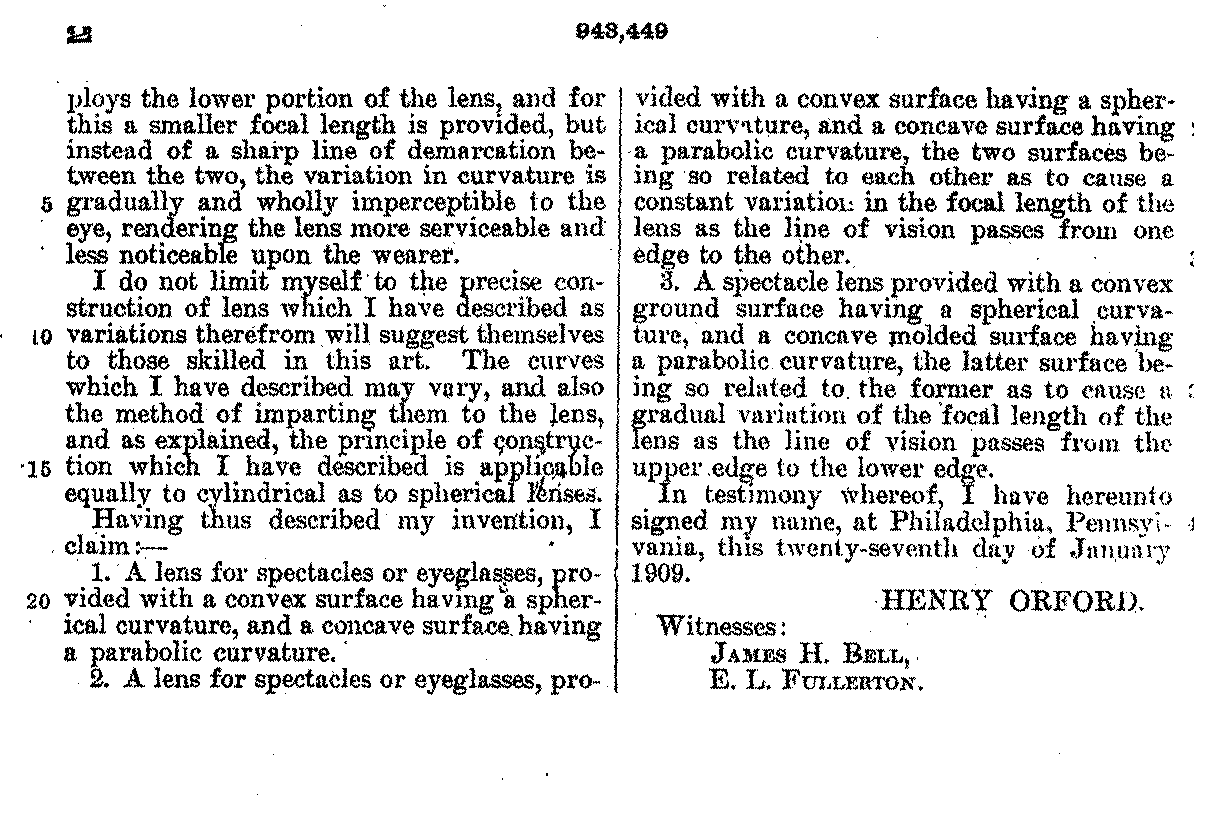
Henry Gowlland 1st September 1914 Improvements in or relating to Lenses for Spectacles etc Ref
This appears to be the first patent mentioning cutting of the lenses,
and is useful in establishing what Henry was trying to achieve.
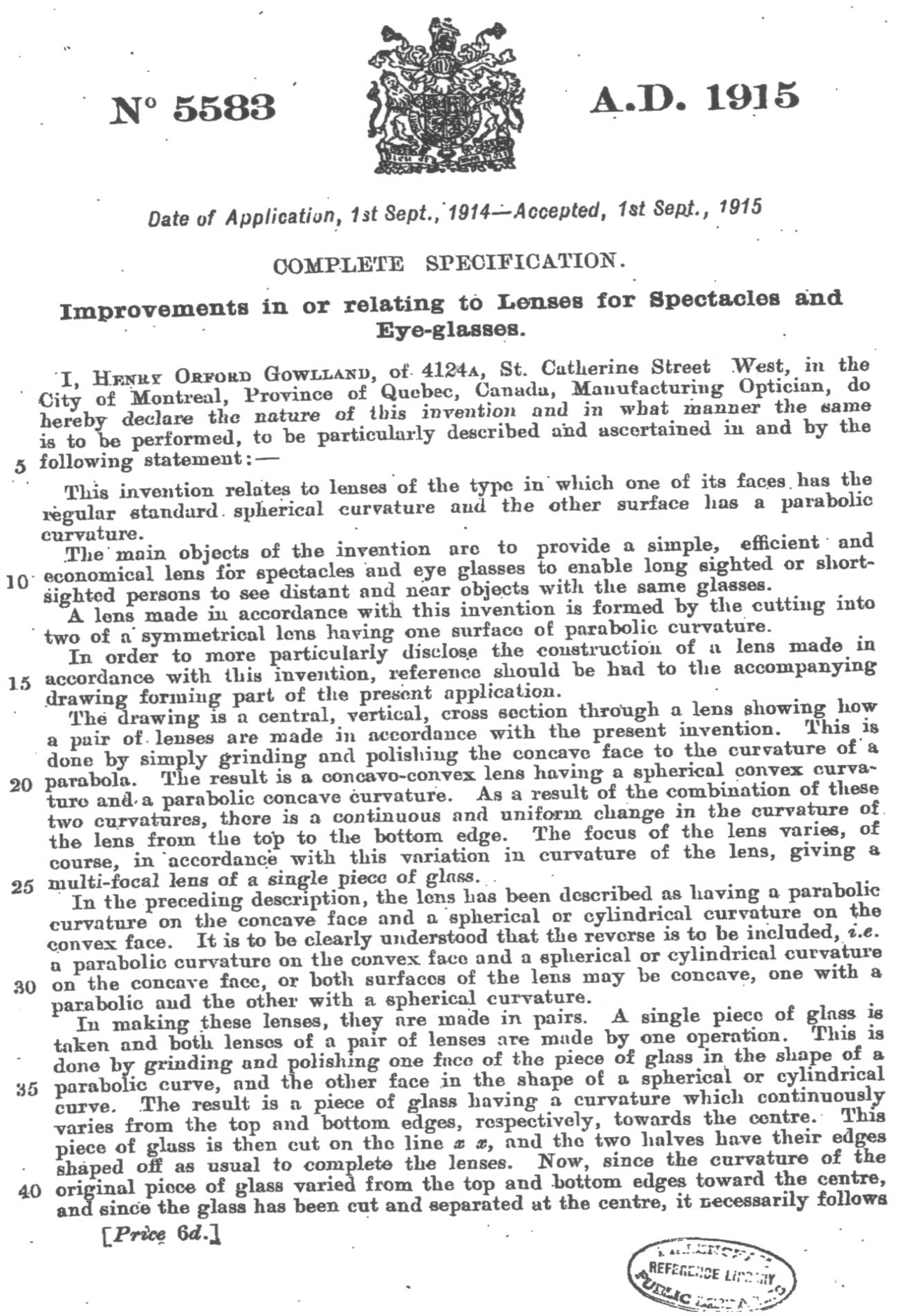
Henry Gowlland 3rd March 1915 Smoothing Head for manufacturing eye-glass lenses Ref B24D13/16
This patent of Henry's covers a smoothing head able to conform to a
face with more than one curvature.
Henry Gowlland 9th October 1915 Lens grinding machine Ref B24B13/005
This patent covers a means of grinding the initial multi-focus
lens, the surface then being finished using the machine above.
Henry Gowlland 7th December 1916 Smoothing Tools for use in the manufacture of Lenses Ref B24D13/142
This appears to be a refinement of the 1915 patent

William Gowlland 29th June 1896 Improvements in and connected with Means for the utilization GB189614375(A)
Charles Gowlland of Acetylene Gas in Motors and Ordnance, and for producing
explosions, and for other purposes.
This patent William enquired about in 1943 as he insisted his ideas
had been used by Barnes Wallis in his bouncing bomb used in the
Dambusters' raid. See Melissa Gowlland's letter to Geoff dated 25th May
1943 - click here. As she comments, "Quite mad, of course!".
William Gowlland 30th June 1896 Improvements in or relating to Fluid-pressure Motors GB189614446(A)
Charles Gowlland Pursuing innovative uses for acetylene, this time for
obtaining rotary motion - remember this was at the very
beginning of motor car development. But generating
acetylene with water and calcium carbide is very dangerous.
Tolerable, perhaps, for headlights, but not for anything bigger.
William Gowlland 29th June 1896 Improved Method of obtaining Motive Power from Gaseous GB189615752(A)
Pressure and Apparatus.
This patent, filed one day before the similar one above, is
in William's sole name - no mention of Charles. Why? It covers
both motors and ordnance. It is so wide-reaching that it seems
unbelievable that it was ever accepted.
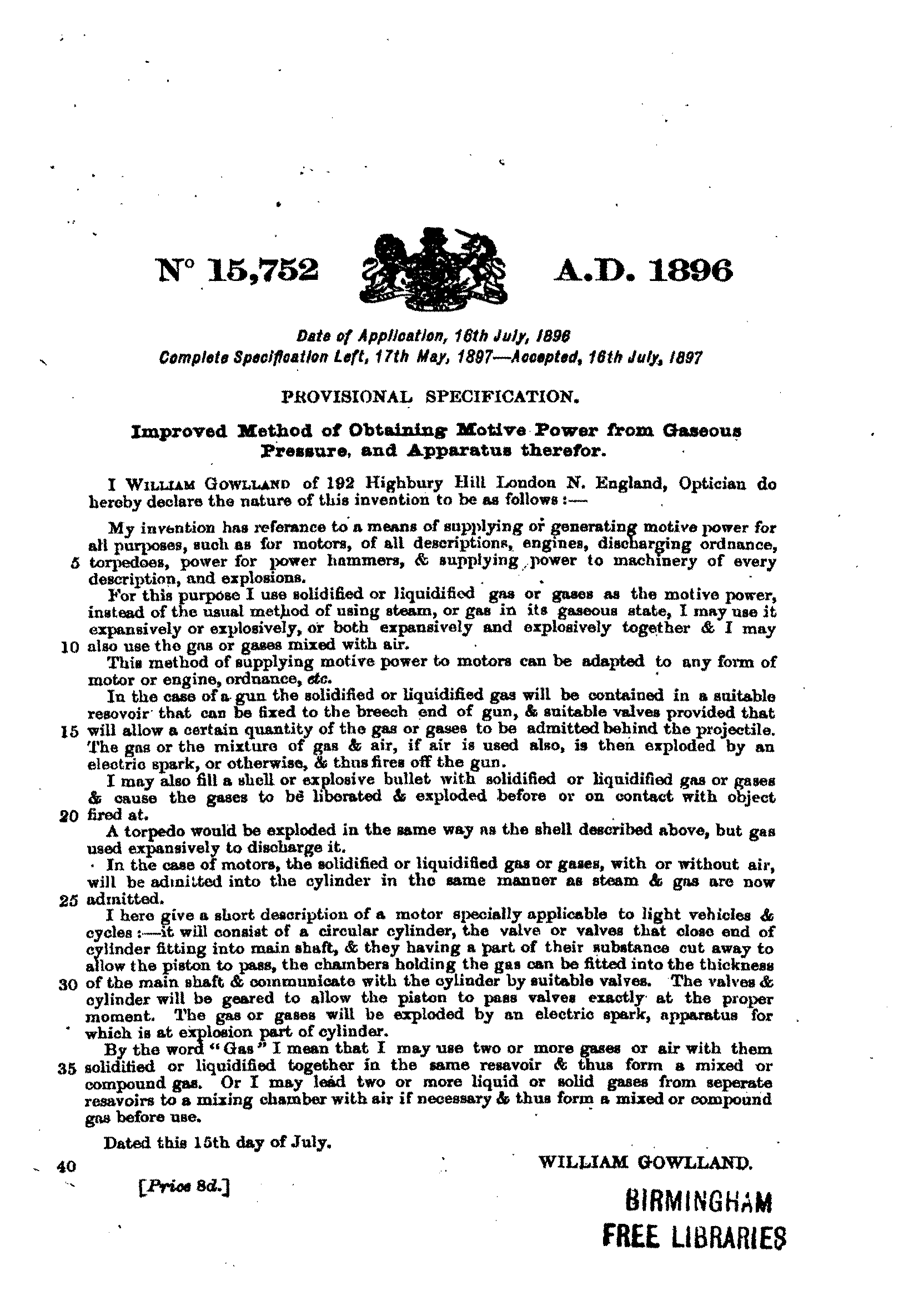
Charles Gowlland 7th September 1944 Improvements connected with cloche clips GB563984(A)
It would seem he had time on his hands! Certainly there
seems to have been no commercial interest in these.
